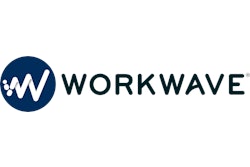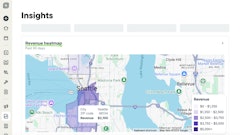
No matter where you look, artificial intelligence (AI) is dominating conversations. Although it can be controversial, there are many incredible benefits to using AI in almost any business, and the green industry isn’t exempt. AI is complex, it’s evolving rapidly and implementation is going to become essential in order to stay competitive.
Benefits of AI implementation
Before determining which tools or areas of operation are right for your business, it’s helpful to take a step back to think of some of the benefits of enhancing your business operations with the use of AI:
- Efficiency: One of the most obvious is the time savings that AI can offer in your day-to-day operations. Automation frees up your human staff to focus on more complex, strategic or personal tasks that drive your business forward.
- Cost savings: Streamlining processes and tools and automating repetitive tasks can reduce the need for manual input, helping to reduce labor costs.
- Risk reduction: Using automation and AI versus human input can reduce the risk of human error, allowing your operations to run smoothly and effectively.
AI applications in your organization
AI is powerful, and there is likely an automated solution for any business function you or your team performs on a daily basis. Whether you’re excited about the future of AI or you’re still a bit wary about the impact it may have, there are some areas of your business where you can easily implement artificial intelligence into your operations to reap the benefits.
Recruiting and interviewing
In order to grow your business and retain your current customers, you need a reliable and stable workforce—but hiring and keeping good people in a high turnover industry is one of the biggest challenges home service business owners and operators face. Implementing the use of AI in recruiting and hiring can help you get the people you need to service your customers in the door faster.
There are many AI tools that can automate the resume screening process by prescreening applicants and then automatically qualifying or disqualifying them based on their answers to a predefined questionnaire. This saves you time by narrowing down the candidates to the most qualified or best fit for the role you’re hiring for.
Another simple use of AI where you can streamline the recruiting process and save time is generating content for job descriptions. Some tools allow users to input the title and any information like necessary certifications, skills, experience and expectations before you’re handed a full description ready for review in just a matter of seconds.
Content creation tools can also be used for crafting interview questions. These systems take the provided job title, requirements, details about your company and needed skills and generate situational, skill-based, behavioral or technical questions based on those details.
Chatbots with natural language processing capabilities (designed to speak like a human) can conduct initial screening interviews through predetermined questions to further narrow down the applicant pool, decreasing the time you spend on potentially unqualified candidates.
Training
Training your team is an essential part of setting them up for success; they are a reflection of your business, so you want to equip them to be their best. Whether you’re conducting training for new employees or ensuring your existing team is up to date on necessary skills, AI is a great way to save time and streamline the process.
You can use AI tools to create interactive training materials and quizzes in a matter of minutes. For example, you can input any training topic, and within 30 seconds, it will generate a branded training with quizzes, visuals and a summary of each section. This provides a great foundation that will save a ton of time as opposed to creating something similar from scratch.
AI also more easily expands the format of training you can provide your team. People learn differently, and while some will be able to sit and read a training manual and digest the information, others will better learn and retain information through video or audio learning. There are more advanced tools like AI text-to-speech voice over tools that can easily convert written text into spoken words, making it easier for your team to better digest and retain the information you’re training on.
One way to decrease your onboarding time through minimal training is by utilizing call scripts for your CSRs. There are a lot of great paid call script tools out there that may integrate with your CRM, but if you’re just dipping your toes in AI and want to explore a free tool, this is another good application of ChatGPT. These scripts can be tailored to specific scenarios, customer concerns and service offerings. For example, begin with a prompt like “Write a script for my CSRs to use if a customer is unhappy because they still have weeds in their yard,” review the outcome, then continue to prompt the tool to tweak it such as “make the tone more friendly” or make it more direct.”
Customer service
This is an area where you may want to use AI more to augment than replace your operations. The home services industry remains a bit more personal than others. While customers want self-service options and more convenient ways to find answers to their questions or problems, they also need to trust the company visiting their home. They want to be heard when they have issues, and they want to be taken care of. Utilizing AI in customer service should be centered around freeing up your human staff for other customer service tasks that address that need for personal interaction.
Chatbots are a great way to reduce quick customer service calls to your office. Customers can ask quick questions about services, pricing, treatment processes, scheduling and more. Chatbots also increase your availability to customers outside of routine business hours, better addressing their needs when they arise.
Automated texting tools are another application of AI that can save a ton of time, but they also reduce the risk of error that accompanies human input. These can be used for service follow ups, proactive service reminders, requesting customer feedback or reviews, and more.
Keep in mind
However you choose to implement AI in your business, it’s important to remember a few things:
- AI is smart, but it’s not 100 percent accurate. Any use of AI should always include a human element of quality assurance and review. Make sure what you’re putting out through AI is an accurate representation of your business.
- Find the right tool for your business — don’t jump right in with big sweeping changes without research and exploration. Anything that will have a heavy impact on your team and operations should be approached mindfully.
- Be flexible. New applications and tools will continue to become available as AI expands and evolves, and changing your operations will be crucial to staying competitive in a saturated industry.




















